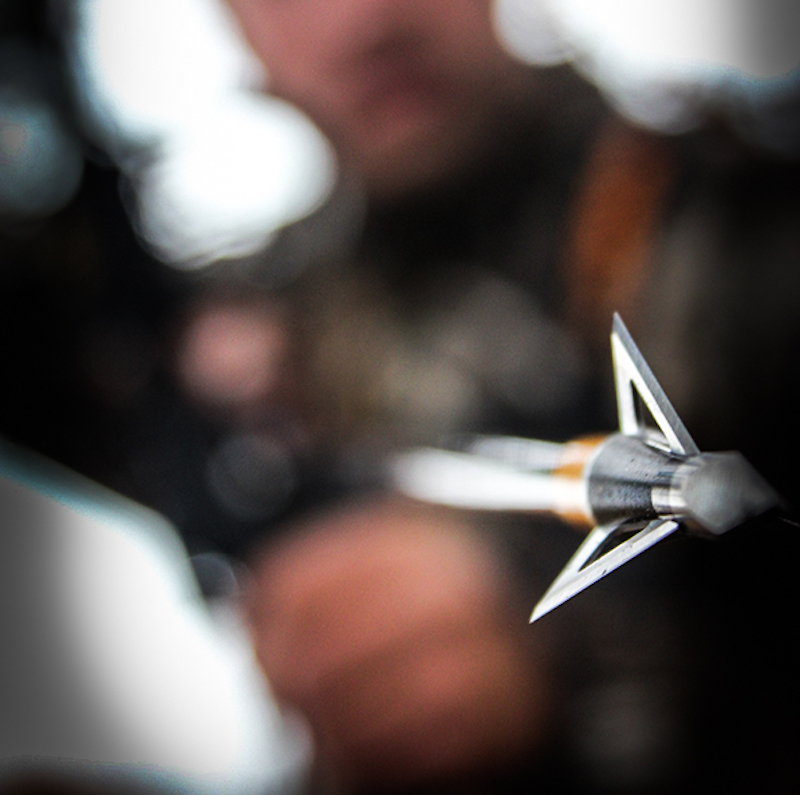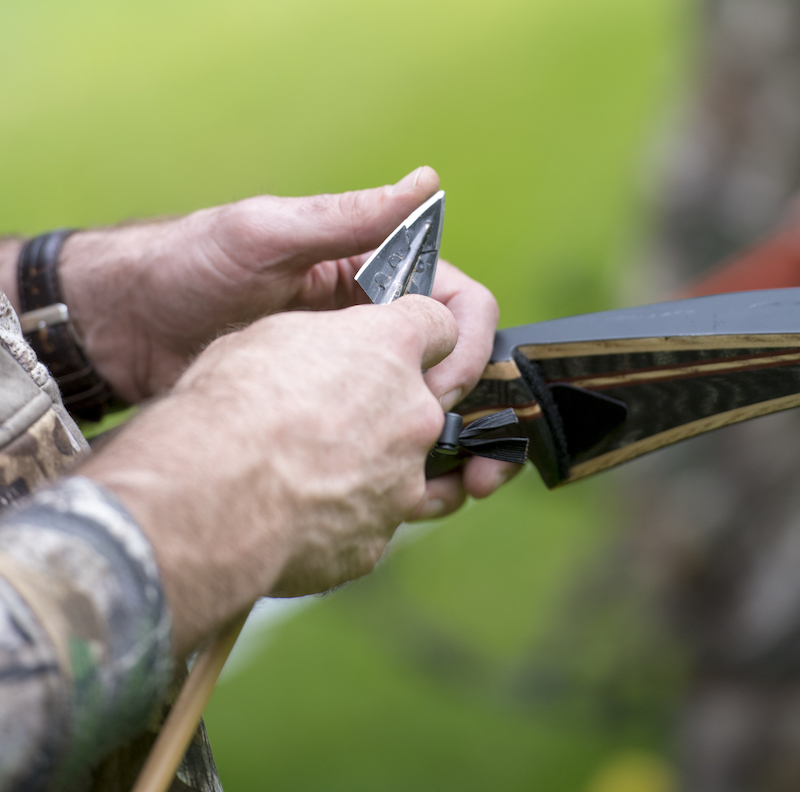With so many choices out there, finding the right broadhead for your hunting setup can seem overwhelming. You can choose from expandable broadheads that look like compact missiles before deploying, to compact fixed blades sold in two-, three-, and four-blade configurations. But don’t worry – once you understand the types of broadheads and benefits of each, you can narrow your search and find the right fit.
To choose a broadhead style, examine your entire hunting setup. Consider your draw weight and length, arrow weight, and your target animal before you commit to a purchase. Total arrow weight and broadhead cutting diameter both impact penetration. As cutting diameter increases, so does the amount of momentum required to generate a complete pass-through. Heavier arrows, especially those roughly 500 grains or heavier, penetrate deeper than light arrows (less that 400 grains). As a result, heavier arrows are more forgiving and can achieve pass-throughs with a wide range of broadhead configurations and diameters, even on game with thick hides like moose, bear, or elk.
On the other hand, lightweight arrows, especially those shot from low poundage bows with a short draw length, can be inhibited by broadheads with a large cutting diameter. However, a short draw length and lightweight draw weight aren’t handicaps for penetration. When paired with a small diameter fixed-blade broadhead, even low poundage hunting rigs can achieve pass-through shots with regularity.

More blades means a greater chance of an ethical kill. Photo Credit: ATA
More blades mean more cutting surface, creating larger wound channels and a greater likelihood for severing arteries and penetrating the vitals. Because cutting surface and friction have a direct correlation, a two-blade broadhead will penetrate deeper than another configuration.
A small-diameter, low-profile, two-blade broadhead is an ideal choice for archers who shoot low poundage. However, three- and four-blade designs are great for bowhunters who shoot heavy arrows and demand large wound channels for increased blood loss.

One-piece blades have been around for ages. Photo Credit: ATA
Many years ago, early archers constructed arrowheads from one solid piece of rock. Crafting broadheads from a single piece of material is still practical and common today, especially in two- and three-blade designs. Because there are no moving or replaceable parts, one-piece broadheads are durable and won’t break on bone or other hard surfaces. If you choose a one-piece broadhead, keep a sharpener handy for your blades, especially after practicing.
Broadheads with replaceable blades ensure you’ll always have an arrow full of sharp heads; you simply replace them as needed. Replaceable blades lock snugly in place with a collar around the broadhead’s ferrule. Most of these come in three- or four-blade designs, and allow archers to go from practicing on the range straight to the field by simply swapping out the blades dulled from the target. Generally, all fixed-blade broadheads are less than 1 ½ inches in diameter, making them an ideal solution for bowhunters who need as much penetration as their setup can muster.
The blades of an expandable broadhead tuck tightly against the ferrule in flight and deploy upon impact. Some designs create a two-inch or more cutting diameter, resulting in devastating wound channels and forgiveness on marginal shots. Keep in mind, expandable broadheads need more kinetic energy and momentum to effectively pass through their target than fixed-blade designs. These broadheads are better suited to hunting setups with a heavy draw weight and arrow. While expandable broadheads have certainly proven to be effective on big game like moose and elk, they’re most popular when used on deer-sized animals with relatively thin hides.
After you’ve cut your arrows, use an arrow squaring device to ensure a flush point of contact between the insert and shaft. This will help your broadhead spin without any wobble when shot and will maximize your accuracy. You can spin-test your arrow with an arrow spinning tool, or simply turn it like a top on a table. If you’re unsure about this step, your local pro shop technician can cut and glue arrows for you and confirm your broadheads are flying properly.
Rather than simply picking a broadhead and matching it to your hunting arrow, do some research about your setup and match it to the design that fits you best. Don’t be discouraged if you shoot a light draw weight. When paired with the correct equipment, nearly every hunting setup can achieve the results needed to harvest big game, filling your freezer full of delicious wild game.